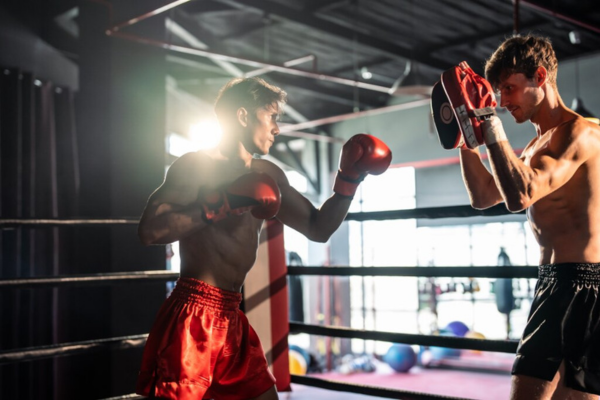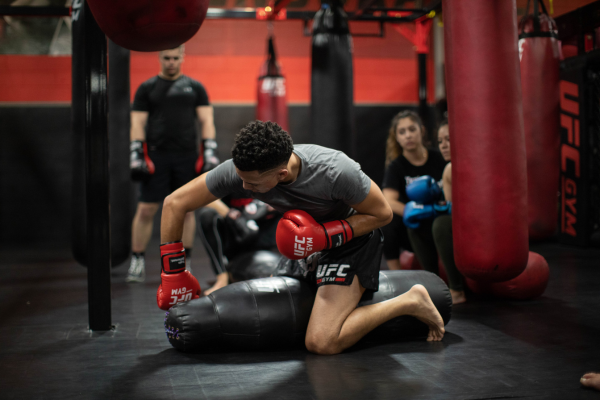Kickboxing vs. Muay Thai: The Differences and Benefits

Kickboxing originated in the 1970s and combines techniques from various martial arts such as karate, taekwondo, and traditional boxing. It began as a hybrid martial art in Japan and quickly spread to the United States and Europe. A wide variety of punches and kicks are used in this sport, making it a dynamic and versatile discipline. Kickboxing's popularity has grown due to its effectiveness as a combat sport and its popularity as a fitness program. Various leagues and professional fighters have made kickboxing an internationally recognized sport.
The history of Muay Thai

Muay Thai, also known as the “art of eight limbs,” is a traditional Thai martial art that has been practiced for centuries. With roots dating back to ancient Siam, the sport utilizes punches, kicks, knees, and elbows, making it a highly effective and well-rounded combat sport. Muay Thai is deeply rooted in Thai culture and is often considered the national sport of Thailand. Traditional Muay Thai matches take place in a ceremonial setting, complete with music and ritual dances, adding to the sport’s rich cultural context.
The basic rules and techniques
Basic rules of kickboxing
Kickboxing has a set of rules designed to ensure both the safety of the fighters and to keep the sport fair and competitive. The basic rules of kickboxing include the use of both punches and kicks, which must be executed above the belt. It is forbidden to strike or kick the back, back of the head, or groin. In official matches, fighters wear protective equipment such as boxing gloves, mouth guards, and shin guards. Matches usually consist of three to five rounds of three minutes each, with a one-minute rest period between rounds. Points are awarded based on technique, power, and the number of successful hits.
Basic rules of Muay Thai
Muay Thai, known for its use of “eight limbs,” has rules unique to the sport. Like kickboxing, punches and kicks are allowed, but Muay Thai goes further by also allowing the use of elbows and knees. This makes Muay Thai a very well-rounded and versatile combat sport. Matches are usually held over five rounds of three minutes, with two minutes of rest between rounds. Fighters wear less protective gear than in kickboxing, usually just boxing gloves and a mouth guard. Elbow and knee strikes add to the intensity and danger of the sport, giving Muay Thai its reputation as a tough but effective combat sport. Points are also awarded based on technique, effectiveness, and the impact of the strikes.
Techniques in kickboxing
The techniques in kickboxing are diverse and include both punches and kicks. Key punches include the jab, cross, hook and uppercut, while the main kicks are the front kick, roundhouse kick and side kick. Kickboxing also places a strong emphasis on defence, with techniques such as blocking, dodging and parrying attacks. Combining punches and kicks into combinations is a core part of kickboxing training, and improving speed, power and precision is essential. Kickboxing is not only an effective combat sport, but also an excellent way to stay fit and improve muscle strength, endurance and coordination.
Techniques in Muay Thai

Muay Thai is known for its use of elbows, knees, kicks and punches. Some of the most distinctive techniques are the elbow strike, knee strike, teep (front kick) and the roundhouse kick. What sets Muay Thai apart is the clinching, where fighters grapple to deliver short knee strikes and elbows. Clinching requires a high level of technique and balance. Muay Thai also places a great deal of emphasis on conditioning the body to withstand the impact of strikes and to strike back more powerfully. This combat sport is not only physically challenging, but also a test of mental resilience and strategic thinking.
Physical and mental benefits of kickboxing
Physical benefits
Kickboxing offers a wide range of physical benefits that make it a popular choice for fitness and martial arts training. Firstly, it helps improve cardiovascular fitness. The intense nature of the workouts, which consist of high-intensity rounds, makes the heart and lungs work hard, leading to improved endurance. Additionally, kickboxing promotes muscle strength and endurance as it provides a full-body workout. Kicks and punches strengthen the legs, arms, and core. Furthermore, kickboxing helps improve coordination and flexibility as it requires quick reflexes and agility. It is also effective for weight loss as a single workout session can burn hundreds of calories.
Mental benefits
In addition to the physical benefits, kickboxing also offers significant mental benefits. One of the most significant benefits is stress reduction. The physical exertion and focus required during training helps to release negative energy and stress. Kickboxing also promotes discipline and self-control. The structured nature of the training and the focus required on technique and timing contribute to improved mental resilience. Furthermore, kickboxing improves self-confidence. By learning self-defense techniques and overcoming physical challenges, practitioners develop a stronger sense of self-worth and self-confidence. Finally, kickboxing can help improve mental clarity and focus, as it requires a high level of concentration and strategic thinking.
Physical and mental benefits of Muay Thai
Physical benefits
Muay Thai offers numerous physical benefits that contribute to excellent overall fitness. Much like kickboxing, Muay Thai significantly improves cardiovascular health through its intense training sessions. The combination of punches, kicks, elbows, and knees provides a full-body workout, leading to increased muscle strength and endurance. Muay Thai is also known for its ability to strengthen core muscles through the constant use of rotation and balance while clinching and striking. Muay Thai also promotes flexibility, as it incorporates high kicks and deep squats. This martial art is also highly effective for fat burning, with a single training session often burning hundreds of calories and helping to maintain a healthy body weight.
Mental benefits
The mental benefits of Muay Thai are equally impressive. One major benefit is the improvement in mental resilience. The intense and sometimes demanding nature of Muay Thai training helps practitioners develop perseverance and stamina. Stress reduction is another major benefit; the physical aspect of the training and the focus on techniques help to reduce stress and anxiety. Muay Thai also promotes self-discipline and self-control. It requires a high level of focus and dedication, which helps to build mental strength and self-control. Additionally, Muay Thai improves self-confidence as practitioners feel stronger and more skilled in self-defense. This increased self-confidence contributes to a more positive self-image and improved mental well-being.
 Nederlands
Nederlands
 English
English
 Deutsch
Deutsch



Leave a comment